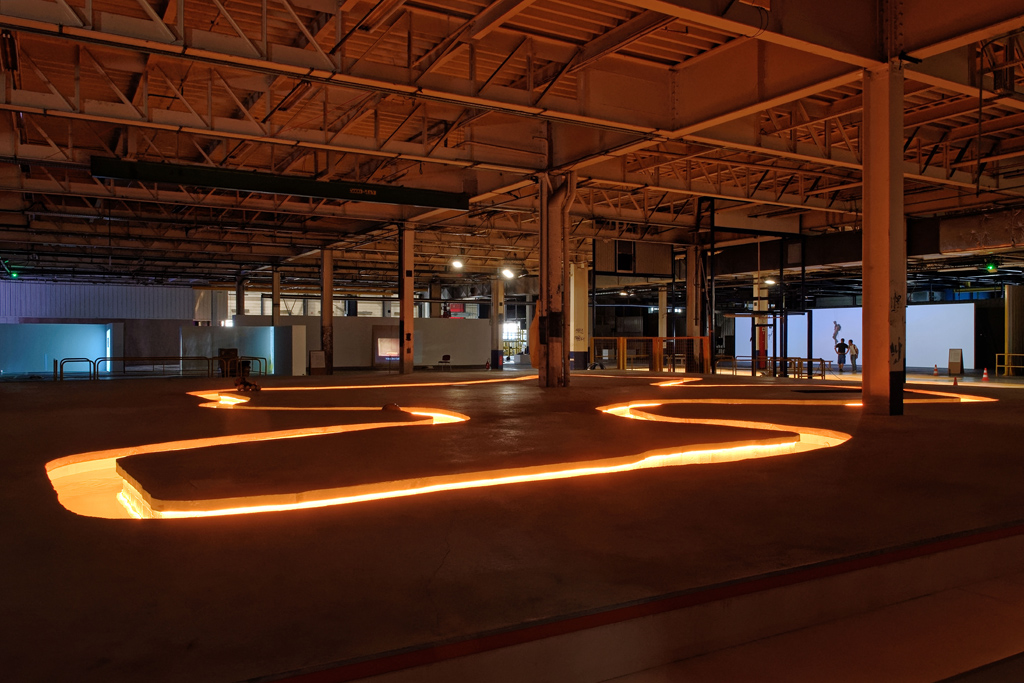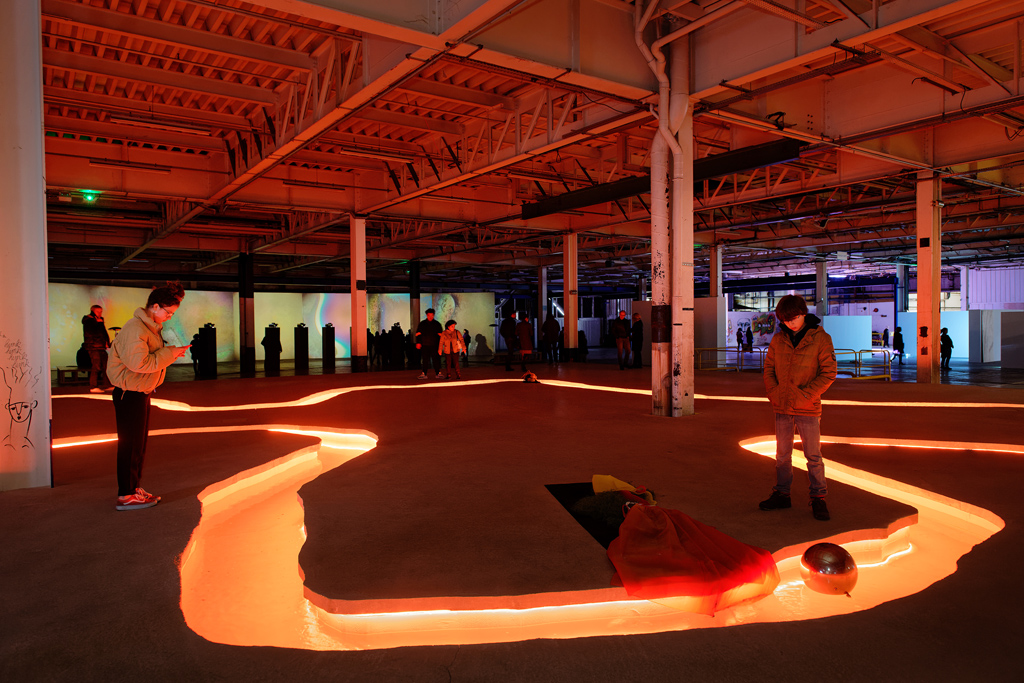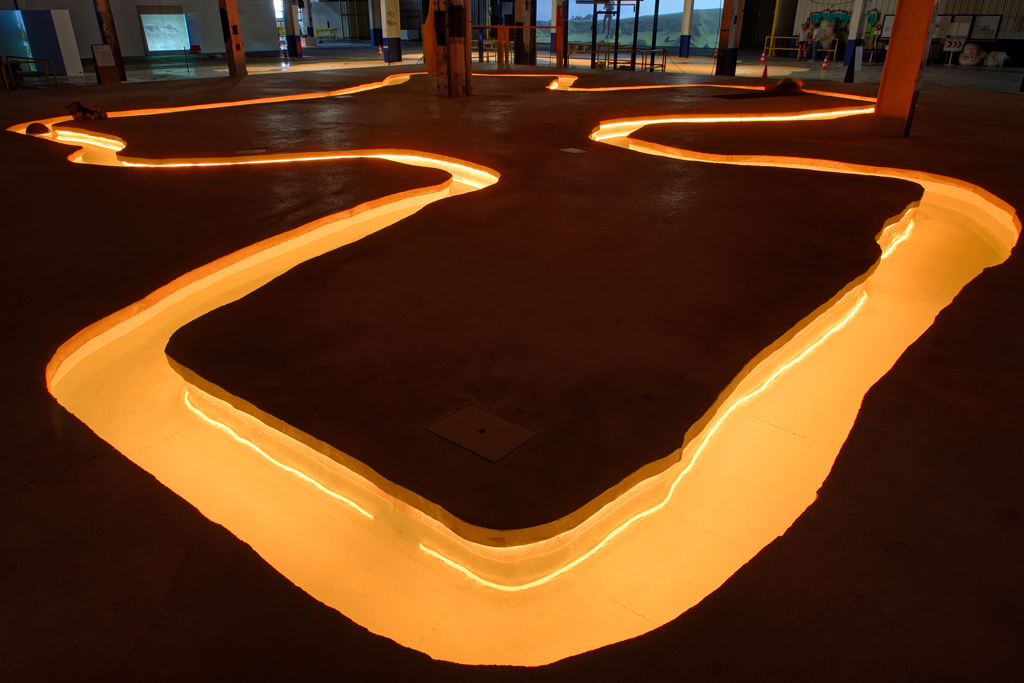
Si tu me vois, je ne te vois pas
La Biennale de Lyon, 2019
Where Water Comes Together With Other Water
18 September 2019 – 5 January 2020
Hot water spring, mixed media



Si tu me vois, je ne te vois pas
2019
Installation view
Hot water spring, LED, Mirrored metal ball, Korean traditional costume, animal mask, artificial plant, velvet, buoy, fake hair
Photo Minouk Lim
For the 2019 iteration of the Lyon Biennale, artist Minouk Lim has created a site-specific installation within the exhibition space of the former Fagor factory. The installation is comprised of a fountain-like installation that signals a shallow phosphorescent river with various objects floating within, such as a reflecting orb and the hem of a traditional Korean dress with artificial plant life spilling out from the neckline. The floating orb moves slowly through the water, reflecting the viewer as it acquiesces to its constant flow. The installation becomes a reference of self portraiture as the orb comes to represent the artist herself, gently propelled through the cycle, touching the river’s edges but never disrupting the water’s flow. Lim’s works have often made poignant references to water; in her work Liquide Commune (2011), Lim combined her tears with ocean water, forging connections between her own personal grief and environmental crisis.
The notion behind Lim’s work in The Lyon Biennial is multifaceted. It begins with water as a force that traces through and beyond life. With many of Lim’s works, the river simulacrum interrogates our relationships with life, death, memory, and displacement. The river functions as a flowing path through memory and the oblivion, ethereally calling to mind the uncertainty regarding what happens to our souls once we die.
The depiction of water in its river form in this particular work examines the dual function of these aquatic bodies—they separate us and act as a source of displacement, but they also act as a place of meeting and opportunity. The subtly illuminated body of water in this work encourages a sense of vulnerability, providing inspiration to find strength in the collective experiences that span across all individuals.
Questioning division and boundaries have always been at the core of Lim’s artistic practice. Within Korea, where the artist was born and raised, the Imjin River runs along the 38th Parallel, breaching the boundary that divides the two parts of the country. Water passes through and cannot be forced to adhere to the man-made boundaries.
1945 brought about the end of the Second World War and the division of Lim’s home into two by the 38th Parallel. Korea remains divided, and the repercussions of this division continue to accumulate. This trauma of separation fuels Lim’s work as she focuses on the aftermath of this division and the subsequent Korean War. She explores the stories of the people affected by this war, honing in on the collective memories of forgotten communities in the aftermath.
For Lim, grief and mourning are vital elements of the human experience. To grieve is to confront elements of existence that invite pain and confusion, namely death. With Si tu me vois, je ne te vois pas, Lim confronts this fear of the unknown head-on, directly addressing the angst and uncertainty that accompanies death in all its forms. In the artist’s own words, her intention is not to write or rewrite history, but instead to question how and why the world has changed.